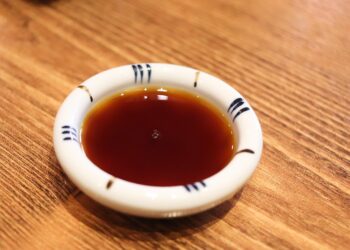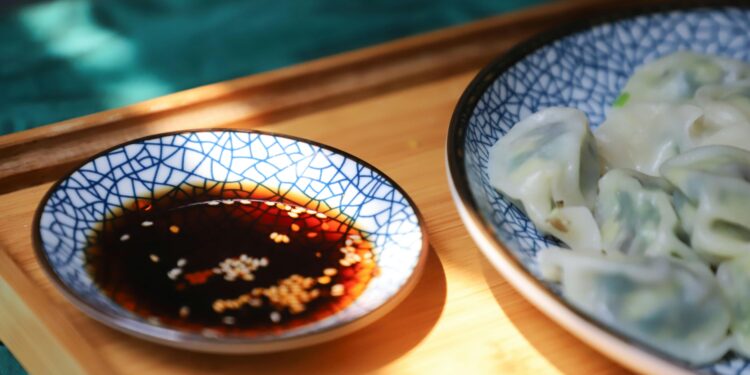There are a lot of key ingredients that we use in our meals today that have been a traditional ingredient for different cultural groups around the world. One of these ingredients dated back to a rich culture is soy sauce. Soy sauce has been a key ingredient in many regional dishes, especially in Asian countries, for a long time.
With no modern way to preserve food back in the days, this just shows how clever people were in the past when trying to find ways to keep food fresh. Soy sauce is made through a process where soybeans and wheat ferment (break down over time) to create a mix of sweet and salty flavors. In this article, we’ll explore the history and details of soy sauce.

Ancient Origins
Soy sauce is a popular ingredient and has been used for thousands of years. The use of soy sauce all started in ancient China during the Western Han period (206 BCE to 220 CE). Back then, people used soy sauce to keep food fresh and at the same time, make it taste better. One example of how ancient people used soy sauce is through soaking meat and fish in the fermented dark liquid.
Usually, there is a good amount of salt present in soy sauce which will help stop bacteria from growing. Because the bacteria were hindered through the salt content in the sauce, it made the food last longer. Also using soy sauce made the meat and fish taste really good.
The original way to make soy sauce involved fermenting (letting them sit and naturally break down) soybeans, wheat, and salt with water. Over time, the method of making soy sauce improved, making it taste better, have a smoother texture, and last longer.
How Is Soy Sauce Made?
The first thing that is done is to cook the soybeans till they soften. Most times, roasted or toasted wheat is mixed with the soybeans to help in the fermentation process. The next thing is to make a brine solution which is basically salt dissolved in a quantity of water.
Koji mold, which is kind of like a fungus, is added to the soy sauce and wheat. This mold helps break down the soybeans and wheat. This mixture is allowed to sit in a warm place for a few days to weeks so the mold can do its job. This step is the first fermentation process.
After the first fermentation, the fermented soybeans and wheat are mixed with the salty water and put in big containers. The mixture is left alone for several months to years, which is the second fermentation process. During this time, natural yeasts and bacteria will make the flavor richer and more complex.
The final steps involved separating the liquid from the solid parts. The liquid is heated to kill any leftover bacteria and to make it safe to eat. Finally, the liquid is filtered and sometimes aged more before putting it into bottles.
Spread and Development
In the 7th century, Japanese Buddhist monks traveled to China to learn about Buddhism. While they were there, they discovered soy sauce, which was already being used in Chinese cooking. When the monks returned to Japan, they brought with them the idea of making soy sauce. These monks started making soy sauce using the available local Japanese ingredients and methods.
As time went on, the Japanese came up with their own types of soy sauce. One of the soy sauce recipes the Japanese came up with is tamari. Tamari is a thick and rich soy sauce made mostly from soybeans. The second type of soy sauce is koikuchi. Koikuchi is the most common type of soy sauce in Japan, made with about equal amounts of soybeans and wheat.
Soy Sauce in Korea and Other East Asian Countries
Just like the Japanese refine Chinese soy sauce to fit their preferences, other Asian countries have done the same. In Korea, soy sauce is called “ganjang.” They have a traditional soy sauce (Joseon ganjang) that uses mostly soybeans and is used in soups and marinades. They also have a sweeter type called “jin-ganjang.”
Furthermore, countries like Indonesia, Malaysia, and the Philippines have their own versions. In Indonesia, they make “kecap manis,” which is a sweet soy sauce made from palm sugar and spices.
Conclusion
In recent times, soy sauce is made in factories instead of in small batches. In the factories, big machines and large fermentation tanks are used to make tons of soy sauce quickly and consistently.
The manufacturers use advanced technologies to keep an eye on the fermentation process. These technologies used in the modern soy sauce fermentation process are to make sure that every batch is of a high-quality. They check things like taste and safety to meet strict standards.
Overall, soy sauce has moved from being just an Asian ingredient to a global favorite, thanks to the modern production methods manufacturers have employed and its versatility in many different types of cooking

















